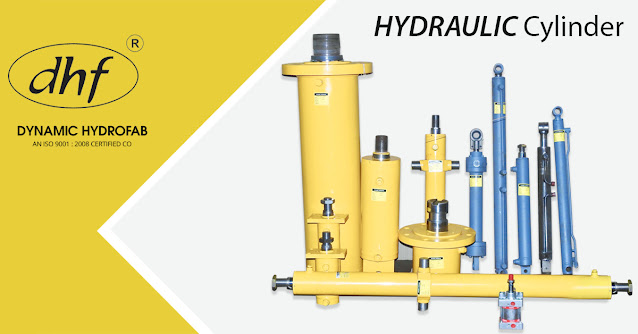Choosing the Right Hydraulic Cylinder for Your Machinery: A Comprehensive Guide
Introduction
Selecting the appropriate hydraulic cylinder for your machinery is a critical decision that impacts the efficiency and longevity of your equipment. With a plethora of options available, understanding the factors that influence your choice is essential. From considering the application-specific requirements to understanding the various cylinder types, we'll cover it all.
Choosing the Right Hydraulic Cylinder for Your Machinery
When it comes to selecting a hydraulic cylinder, several factors must be taken into account. Here's a breakdown of key considerations to guide your decision-making process:
Understanding the Application
The first step in choosing the right hydraulic cylinder is understanding the application it will be used for. Is the cylinder intended for heavy lifting, pushing, or pulling? Different applications require cylinders with varying stroke lengths, bore sizes, and load capacities. For instance, a cylinder used in construction machinery will differ from one used in agricultural equipment.
Load Capacity and Force Requirements
Determining the load capacity and force requirements is crucial. Calculating the maximum force the cylinder needs to exert helps you select the right bore size and hydraulic pressure. Make sure to account for potential shock loads or variations in force during operation.
Cylinder Type and Configuration
Hydraulic cylinders come in various types, including single-acting, double-acting, telescopic, and differential cylinders. Each type serves specific purposes, so understanding their functionalities is key to making an informed choice.
Stroke Length
The stroke length refers to the maximum distance the cylinder can extend and retract. It's vital to choose a stroke length that accommodates the machinery's range of motion while avoiding overextension that might cause damage.
Mounting Options
Consider how the cylinder will be mounted onto the machinery. Mounting styles include front flange, rear flange, centerline lug, and trunnion mounting. The chosen mounting style should align with your machinery's design and space constraints.
Operating Conditions
Environmental factors, such as temperature, moisture, and exposure to corrosive substances, can impact cylinder performance. Select a cylinder with suitable seals and materials that can withstand the operating conditions.
Maintenance and Serviceability
Opt for cylinders that are easy to maintain and repair. Quick and accessible maintenance points can significantly reduce downtime and increase the overall efficiency of your machinery.
Budget and Cost Considerations
While quality should never be compromised, it's important to choose a hydraulic cylinder that aligns with your budget. Consider the initial cost, maintenance expenses, and potential long-term savings.
Also Read:- How Does a Hydraulic Cylinder Work?
Expert Tips for Making the Right Choice
Here are some expert tips to help you make an informed decision when choosing a hydraulic cylinder:
Research Thoroughly: Take time to research different cylinder options and manufacturers. Look for reviews, testimonials, and case studies to gauge the performance and reliability of the cylinders.
Consult with Professionals: If you're unsure about the right cylinder for your machinery, consult with hydraulic system experts or engineers. Their insights can provide valuable guidance.
Consider Future Needs: Anticipate any future changes in your machinery's requirements. Choosing a versatile hydraulic cylinder that can adapt to different scenarios can save you from frequent replacements.
Prioritize Safety: Safety should always be a top priority. Ensure that the chosen cylinder complies with safety standards and regulations.
Evaluate Total Cost of Ownership: Instead of solely focusing on the initial cost, evaluate the cylinder's total cost of ownership over its lifespan. This includes maintenance, repair, and potential downtime costs.
Conclusion
Choosing the right hydraulic cylinder for your machinery is a decision that requires careful consideration. By understanding your application, load requirements, and the various cylinder types available, you can make a choice that enhances the performance, efficiency, and safety of your equipment. Remember to consult with experts, prioritize safety, and evaluate long-term costs to ensure a successful hydraulic cylinder selection process.
FAQ's
Q: Can I use the same hydraulic cylinder for different types of machinery?
A: While some cylinders may be versatile, it's generally recommended to choose a cylinder that aligns with the specific requirements of each machinery type for optimal performance.
Q: What's the difference between single-acting and double-acting cylinders?
A: Single-acting cylinders exert force in one direction (usually extending), while double-acting cylinders can apply force in both extending and retracting directions.
Q: How do I calculate the required cylinder bore size?
A: Calculate the force needed for the application and divide it by the hydraulic pressure to determine the required bore size. Consulting a hydraulic engineer can provide accurate calculations.
Q: Are there environmentally-friendly hydraulic cylinder options?
A: Yes, some manufacturers offer eco-friendly hydraulic cylinders that use biodegradable fluids and materials to reduce environmental impact.
Q: What's the advantage of telescopic cylinders?
A: Telescopic cylinders are known for their compact design and ability to provide a long stroke length in confined spaces.
Q: Can I install hydraulic cylinders myself?
A: Installation should be carried out by trained professionals to ensure safety and proper functioning. Improper installation can lead to accidents and equipment damage.

.jpg)










Post a Comment